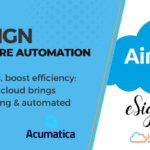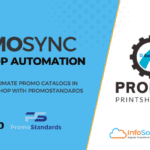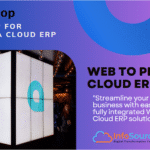Open API has endless possibilities when you open up your business logic to the outside world to consume your data or business workflow through their application, thus making it a seamless integration between two or more systems.
Open API
Acumatica’s robust Open API allows us to take advantage by integrating with EDI, E-commerce, Shipping, Credit Card, WMS, CRM and other host business application tools. The REST API allows developers to connect securely and consume during day-day activities such as creating sales orders from e-Commerce stores or calculating freight charges or tax from third-party providers.
Printshop is an Acumatica plugin for print automation, built for print businesses engaged in custom decorations of products such as screen printing, embroidery, promotional products or any embellishments.
We took advantage of the Acumatica framework and exposed our Printshop API methods through Acumatica Open API by creating web-service endpoint extensions. With these simple steps, business owners or developers can create Job cards from an e-commerce website and have the print workflow automated without human intervention and sharing of data in real-time. In this blog article, we will walk through the scenario and solution of how we solved a complex problem.
Use Case Scenario
Let’s say you have an e-Commerce website powered by Shopify or BIG Commerce. You sell apparel, jerseys or promotional products, and you let your customers/shoppers customize or personalize their products with their color, name, logos etc.
In the real world, this custom metadata would be collected in e-Commerce stores, making it harder to integrate with. It would need an export and import of data through spreadsheets, or the custom decoration or embellishment specs to be typed out manually.

Integration Steps
Step 1: Extend the Acumatica Printshop API
Upon logging into the Acumatica Cloud ERP, click on the Integration workspace and look for the Web Services End-Point menu option. If you don’t have an end-point created, create a new end-point called Printshop.

Step 2: Test your script with Postman
Once you have established the web services end-point and the required credentials (creating a new user with rights and permission to access API and sales order modules), it’s time for the rubber to hit the road! Let’s test drive this using Postman or other similar API platform testing tools.
Connect to the Acumatica instance with your credentials. Create/copy-paste this piece of code and make sure you change the Order type and Order Nbr parameter – making sure that the Order Nbr exists in Acumatica. Populate the Printshop Job card details (for testing, we selected key required fields) and execute the PUT command, ensuring you choose JSON as the format.
{
"OrderType" : {value : "SO" } ,
"OrderNbr" : {value : "SO006335" },
"JobCode":{value:"<NEW>"},
"JobType": {value:"S"},
"Description": {value: "2 Color SP - Test"},
"ShipDate": {value: "12/28/2022"}
}Upon execution of this script you should see a new job card created in Acumatica for this specific sales order, with all the data passed from e-Commerce or other third party systems.
Step 3: Acumatica Sales Order – Job Creation Made Easy
This bit of coding has to be done in your e-Commerce store or within your Acumatica custom package in a push or pull method, evoking the job card creation methods for an existing or new sales order.
Upon creating the job cards, you can also extend to upload the art files or attachments and assign the job cards to specific line items on the sales order. Doing this allows for a continuous flow of events in Acumatica Printshop for the production guys to pick, print, pack and ship the custom tees to your golfer.
Step 4: Build away your integration & Impress the World!
Now it’s possible with an Open API system like Acumatica Printshop for you to collect custom metadata on an e-commerce store and bring that in an automated way to backend ERP – cutting down time and your requirement for resources. Your business can scale in the cloud, and now you can do more with fewer resources.
Automation is the key to being successful in the Print world, and Printshop makes it happen.







